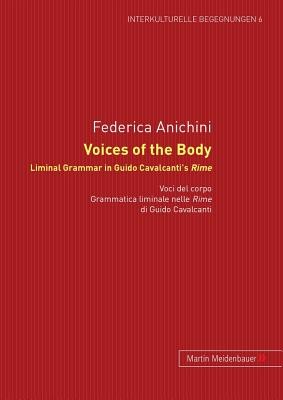
- We will send in 10–14 business days.
- Author: Frederica Anichini
- Publisher: Peter Lang D
- ISBN-10: 3899751310
- ISBN-13: 9783899751314
- Format: 15.5 x 21.6 x 1.8 cm, kieti viršeliai
- Language: English
- SAVE -10% with code: EXTRA
Voices of the Body. Liminal Grammar in Guido Cavalcanti's Rime; Voci del corpo. Grammatica liminale nelle Rime di Guido Cavalcanti (e-book) (used book) | bookbook.eu
Reviews
Description
Guido Cavalcanti, the first thirteenth-century author to gain the reputation of an auctoritas while still alive, has been handed down by literary tradition mainly for his Canzone Donna me prega, a dense philosophical treatise about love.
This book looks at the Rime from the perspective of the 'minor' poems, in which Cavalcanti demonstrates his theoretical conclusion by staging the venture of a lover inescapably doomed. Mired in his sensations, the lover exemplifies an existence that falls short of the faculty of imagination, therefore of the vision of God. The terrestrial perfection available to humans also affects language. The Voices of the Body are the nonverbal signs that Cavalcanti employs to articulate a grammar that is delimited by the lover's sensorial capacities. Federica Anichini focuses on two corporeal modes of speaking, spirits and tears. Her investigation of Cavalcanti's lines is grounded in the pages of the most popular medical handbook of the thirteenth and fourteenth centuries, Avicenna's Liber Canonis, as well as in the linguistic theories of the Modistae. This study outlines Guido Cavalcanti as the forger of a special grammar that stands as a revolutionary invention in the field of poetic language.EXTRA 10 % discount with code: EXTRA
The promotion ends in 23d.11:46:35
The discount code is valid when purchasing from 10 €. Discounts do not stack.
- Author: Frederica Anichini
- Publisher: Peter Lang D
- ISBN-10: 3899751310
- ISBN-13: 9783899751314
- Format: 15.5 x 21.6 x 1.8 cm, kieti viršeliai
- Language: English English
Guido Cavalcanti, the first thirteenth-century author to gain the reputation of an auctoritas while still alive, has been handed down by literary tradition mainly for his Canzone Donna me prega, a dense philosophical treatise about love.
This book looks at the Rime from the perspective of the 'minor' poems, in which Cavalcanti demonstrates his theoretical conclusion by staging the venture of a lover inescapably doomed. Mired in his sensations, the lover exemplifies an existence that falls short of the faculty of imagination, therefore of the vision of God. The terrestrial perfection available to humans also affects language. The Voices of the Body are the nonverbal signs that Cavalcanti employs to articulate a grammar that is delimited by the lover's sensorial capacities. Federica Anichini focuses on two corporeal modes of speaking, spirits and tears. Her investigation of Cavalcanti's lines is grounded in the pages of the most popular medical handbook of the thirteenth and fourteenth centuries, Avicenna's Liber Canonis, as well as in the linguistic theories of the Modistae. This study outlines Guido Cavalcanti as the forger of a special grammar that stands as a revolutionary invention in the field of poetic language.

Reviews